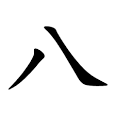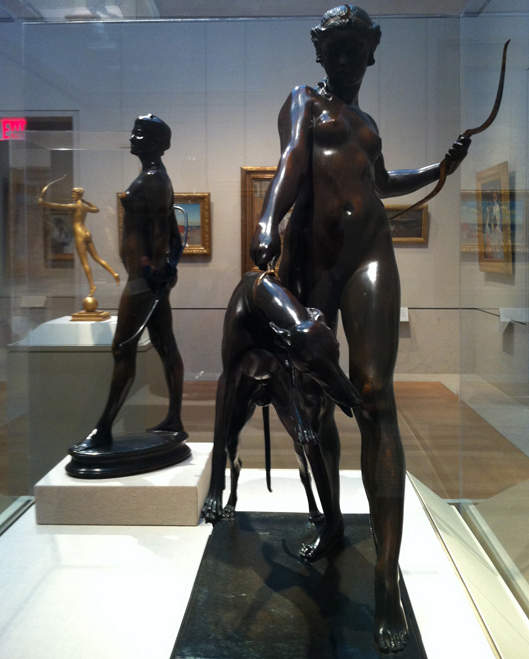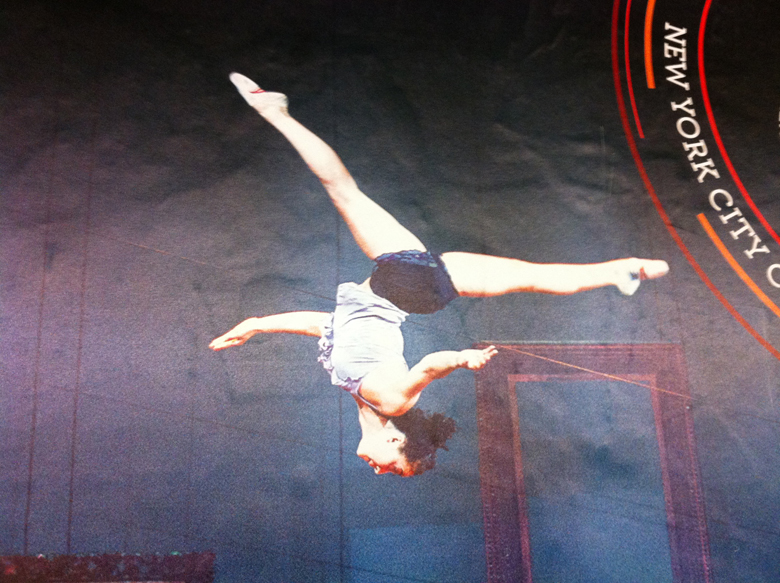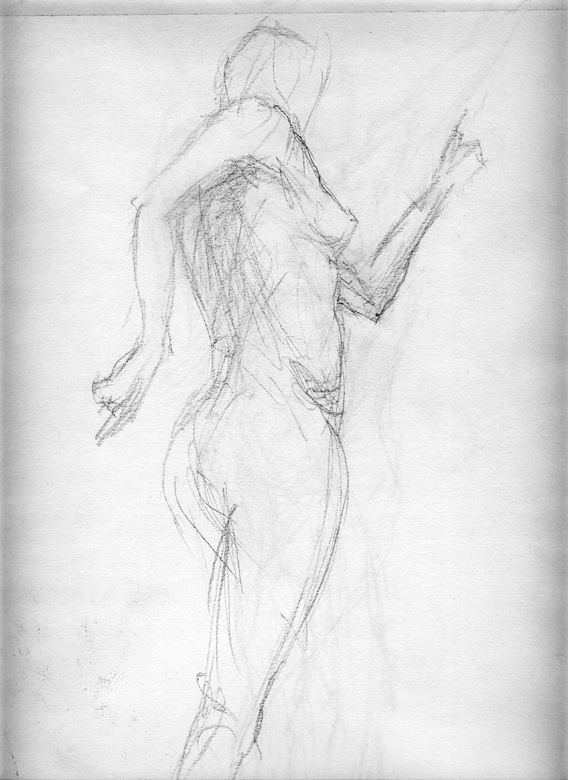XCIII
[The nude] points to the interest that first Greek and then European cultures showed in modelization, whether this modelization proceeded from imitation or from idealization – the nude has continually oscillated between these two poles throughout its history – and whether it was based on anatomical analysis or mathematical calculations. Such is the power attributed to abstract form – abstract in both senses of the word: of being abstracted from the posing model, and of being abstracted as an essence; the one supports the other, and the two are united in the archetype. As is confirmed in every respect, our “theory” has always modelized, and this is what science in the West owes its triumph to. Even political thought [especially political thought (E.D.)] can be seen drawing up the plan of the ideal city in the same way that an artist would draw the canonical nude – as we saw earlier, Plato makes a comparison between the two. They share a common background of a possible mathematicization of reality, which is to be seen in Cleisthenes’ foundation of the Greek city on the basis of a numerical distribution and the calculations of the proportion of the nude alike. [Jullien, …Nude, p. 111]
And yet, there are times, even in the Western wilds, what’s left of it, that the trees look very forestish and vice versa, and no clear, or, more importantly, meaningful, distinctions are possible. As well as during times of “leveling” – where the path is neither linear nor obscure, but rather takes the form of a pattern, even if we cannot read it, we still sense its presence.
And there are times when, in turning our steps with a ko-bu (hooking step) in ba gua zhang, moving toward or around or away from an opponent or obstacle – even when our art is being practiced in New York City, embraced or imprisoned within its mighty grid of streets – that our feet will fall, via the subtle change in our intention, our mingmen, the opening and closing of our inguinal ligaments, into a figure which seen from above, looks like a ba:
 A figure neither imitated nor ideal, yet both and something more. And, as mentioned toward the end of the preceding BWC, given the river’s two-way flow, the Arabic 8 loops back on itself, signifying a set number of things – and infinity. And to reiterate Jullien, the sign or indice is “the point where the visible and invisible compenetrate each other instead of splitting into overlapping planes.” […Nude, p. 109]
A figure neither imitated nor ideal, yet both and something more. And, as mentioned toward the end of the preceding BWC, given the river’s two-way flow, the Arabic 8 loops back on itself, signifying a set number of things – and infinity. And to reiterate Jullien, the sign or indice is “the point where the visible and invisible compenetrate each other instead of splitting into overlapping planes.” […Nude, p. 109]
You know you’re in NYC when a panicky tourist, bolting off the subway just ahead of the closing doors, clocks you in the knee with her oversized, fake LV handbag. And doesn’t notice.
And the flowing substance mocks the vessel: contain me if you can!
I cannot remember my father. He died when I was two years old. My mother remarried, but it was to a man that brought her great suffering, although she had married for love. My stepfather was a musician and was destined to lead a most remarkable life. He was the strangest and most extraordinary person I have ever known. He had too powerful an influence over my early childhood, and this certainly affected my whole life. In order to make my story more comprehensible, I must first give an account of his life, the details of which I only learnt later from the famous musician B. who was a companion and close friend of my stepfather’s in his youth.
My stepfather’s name was Efimov…
This begins the opening chapter of Fydor Dostoyevsky’s first, never-completed novel, Netochka Nezvanova (Nameless Nobody). Jane Kentish, trans. New York: Penguin Books, 1985.
THE RAILROAD STATION
My nonarrival in the city of N.
took place on the dot.
You’d been alerted
in my unmailed letter.
You were able not to be there
at the agreed-upon time.
The train pulled up at Platform 3.
A lot of people got out.
My absence joined the throng
as it made its way toward the exit.
Several women rushed
to take my place
in all that rush.
Somebody ran up to one of them.
I didn’t know him,
but she recognized him
immediately.
While they kissed
with not our lips,
a suitcase disappeared,
not mine.
The railroad station in the city of N.
passed its exam
in objective existence
with flying colors.
The whole remained in place.
Particulars scurried
along the designated tracks.
Even a rendezvous
took place as planned.
Beyond the reach
of our presence.
In the paradise lost
of probability.
Somewhere else.
Somewhere else.
How these little words ring.
[Wisŧawa Szymborska, Poems: New and Collected. Stanislaw Baranczak and Clare Cavanagh, trans. New York: Harcourt, Inc., 1998]
Cosher Bailey had an engine,
It was always wanting mending…
On the night run up from Gower
She went twenty mile an hour,
As she whistled through the station,
Man, she frightened half the nation.
Cosher bought her second-hand
And he paint her up so grand,
When the driver went to oil her,
Man, she nearly bust her boiler.
Cosher Baily’s sister Lena,
She was living up in Blaina,
She could knit or darn our stockings,
But her cooking it was shocking.
Cosher Baily went to Oxford
For to pass matriculation,
But he saw a pretty barmaid
And he never left the station…
And who robbed the miner?
Cry the grim bells of Blaina…
I don’t give two Fricks for your Holbien
I am a socialist. That is why I want as much beauty as possible in our everyday lives, and so I am an enemy of pseudo-poetry and pseudo-art of all kinds. Too many ‘poets of the Left’, as they call themselves, are badly in need of instruction as to the difference between poetry and propaganda… These people should read William Blake on Imagination until they show signs of understanding him. Then the air will be clear again, and the land be, if not full of, fit for song. Wrote Idris Davies, author of the poem “Bells of Rhymney,” in his diary.
Odalisque on an Grecian Urn.
Sure, why not?
Well, for starts…
Hetacombs, hetacombs
Off the waterfront
Handsupdontshoot
Icantbreathe
Ismellgas
About 300 Templars died at the Springs of Cresson and Hattin. The order swiftly replenished this manpower, but something else had been lost, irretrievably. In the course of the battle, the piece of the true cross had vanished, and with it, something had gone of the faith that had sustained the crusading spirit. Within months, Saladin had swept the Christians out of Jerusalem, and from their other strongholds as well, until all that the Franks held in Outremer were Tyre and a few outlying castles. (Guy [de Lusignan, king of Jerusalem] ended his days still a king, but of Cyprus rather than Jerusalem.)
The loss of Jerusalem shocked Christian Europe into the enormous effort of the Third Crusade. By 1189 floods of European fighting men were descending on Palestine again, ardent to recover the sacred shrines – and utterly ignorant about how to do it. [Cecelia Holland, “Firebrands of the Franks,” The Quarterly Journal of Military History. Vol. 5, No. 1, Autumn 1992]
Survivor’s guild
There is, I daresay, a deal of difference between Old High Slavonic and a Cold High Colonic. But I leave it to others, more discerning than I, to explicate the subtleties…
Jullien suggests that the aim of all Chinese strategy lies in the art of detecting incices and making use of them. “Nor,” he says, “can I renounce trying to establish the logic of the operations that everything shows to have been understood by the Chinese as being interwoven, and that the ‘literati,’ who were the emblematic figures of this culture, manipulated as such. As a final illustration I will take poetry. In China, with a few notable exceptions such as Li He and Li Shangyin, poetry makes limited use of symbols. These are codified (“white clouds,” “pale moon…”) and serve as stereotyped images whose conventional impact has to be revived every time they are used. The feeling of ‘abandonment’ evoked by the poem – a classic theme – is nonetheless suggested by discreet indices: a slackened belt (no strength to feed oneself…), the pathway is covered in newly grown grass (now trod by so few visitors…). Nowhere is sadness specifically mentioned, but everything alludes to it. It is a ‘state of mind’ that no word can capture and that defies description, but which can be revealed by one slight detail; and as the emotion pierces through indirectly, this infinitesimal detail touches upon the infinite.”
…Nude, p. 109-110
Oh, the sight of it was heart-rending,
Cosher drove his little engine,
And he got stuck in the tunnel,
And went up the blooming funnel.
Yes, Cosher Bailey he did die,
And they put him in a coffin.
But, alas, they heard some knocking –
Cosher Baily only joking.
Well, the Devil wouldn’t have him,
But he gave him sticks and patches,
For to set up on his own
On the top of Barford Hatches.
The note accompanying this song in The Shuttle and Cage says that “Cosher Baily was a Monmouth ironmaster who built the Taff Vale railway along the Aberdare Valley in 1846. According to Legend he drove the first train along the railway himself and got stuck in a tunnel – a situation which gave rise to a number of ribald verses… the motif of the Devil allowing a master to set up a hell of his own (usually a foundry or mine) is a familiar one in industrial folklore.” This note is attributed to A.L. Lloyd.
Where, then, have East and West compenetrated? On what field (田 tian) do the spores cross-fertilize? For the “fish” of the taiji swim on, distinct and conjoined, circling endlessly, each with an “eye” the color of its opposite.



